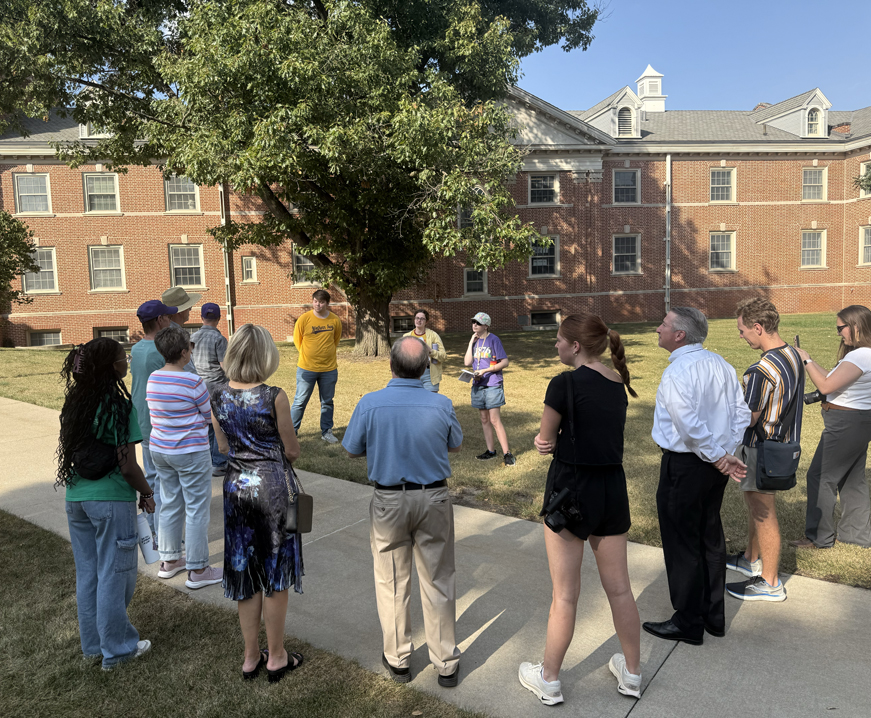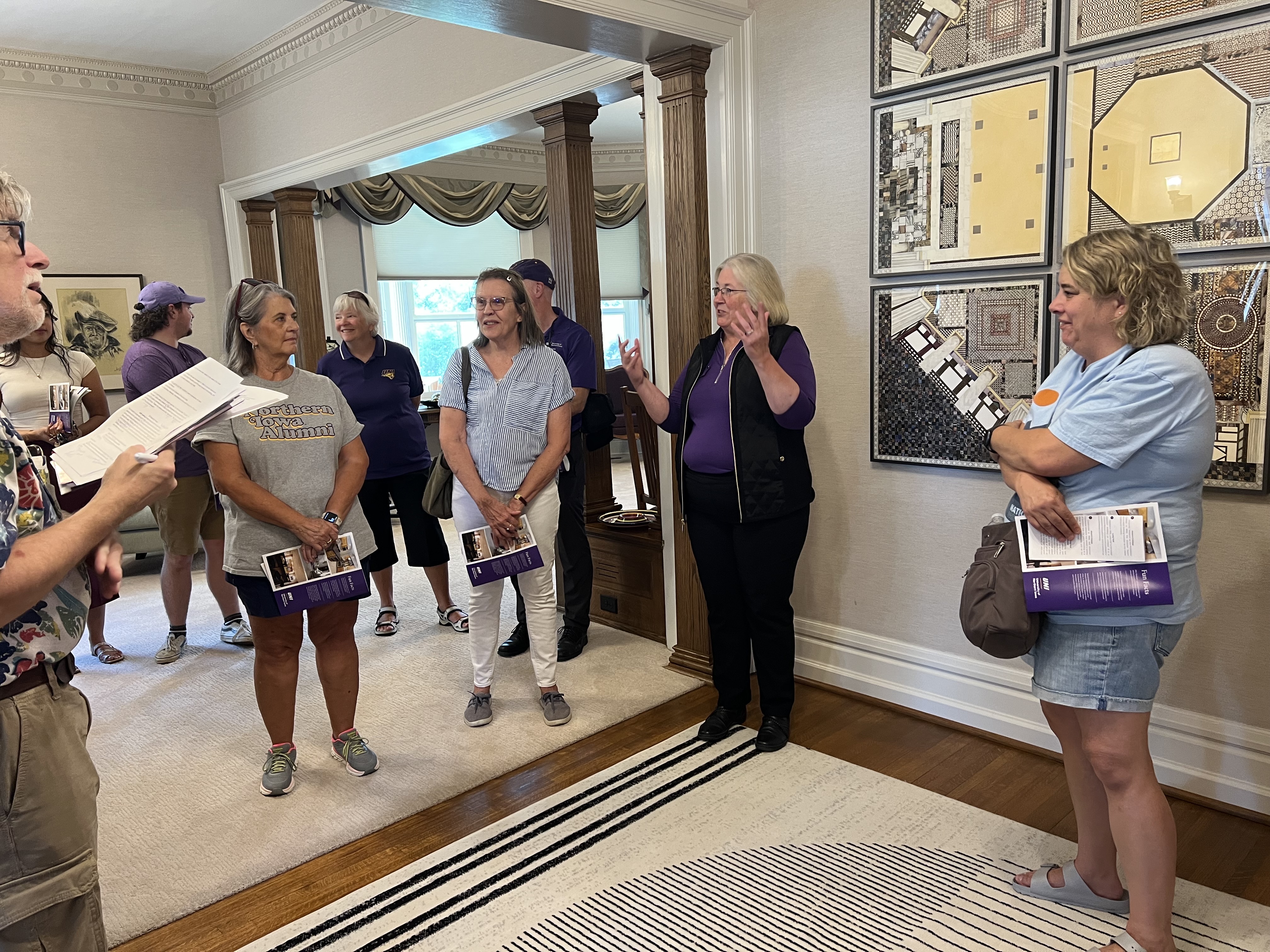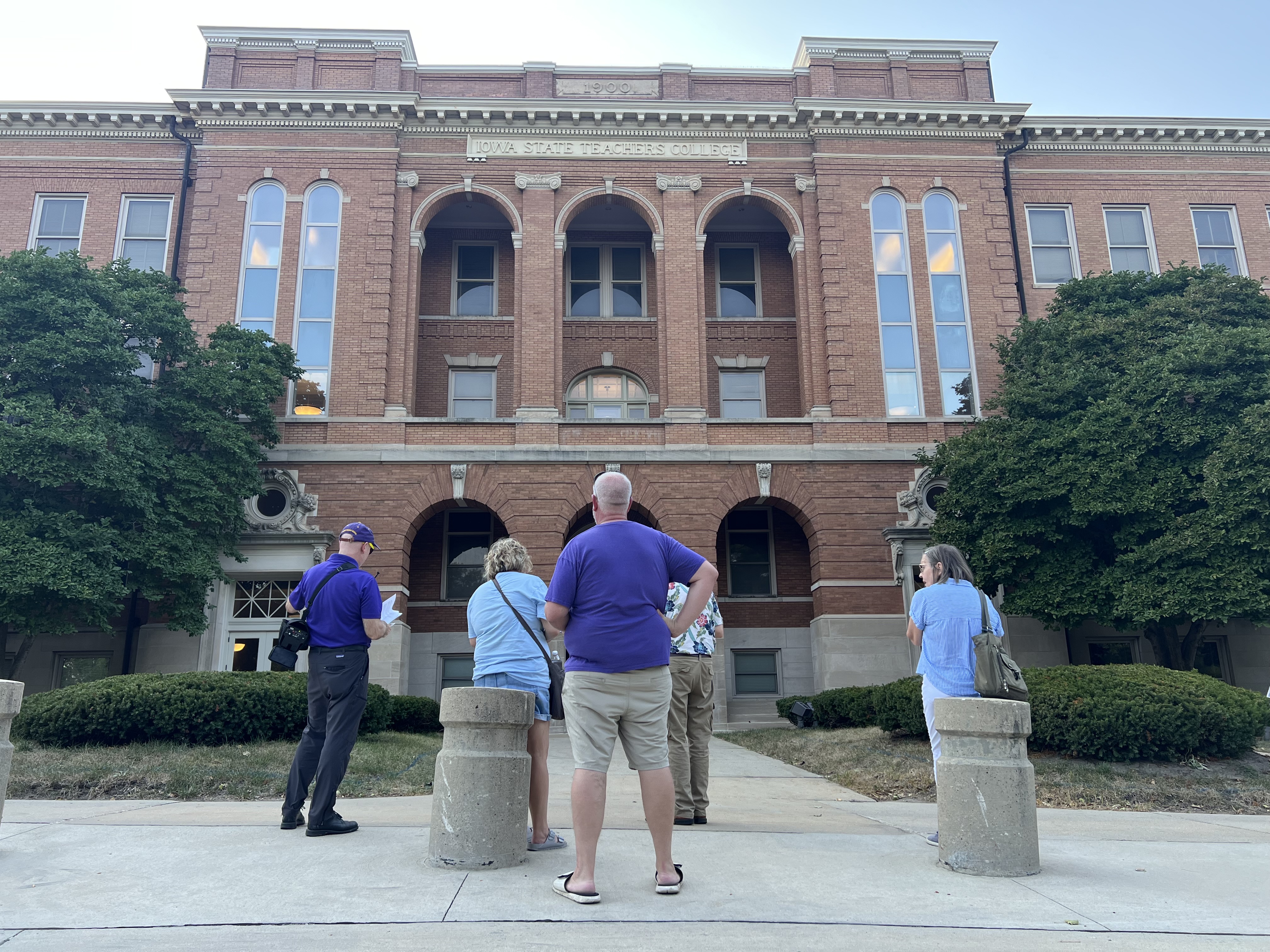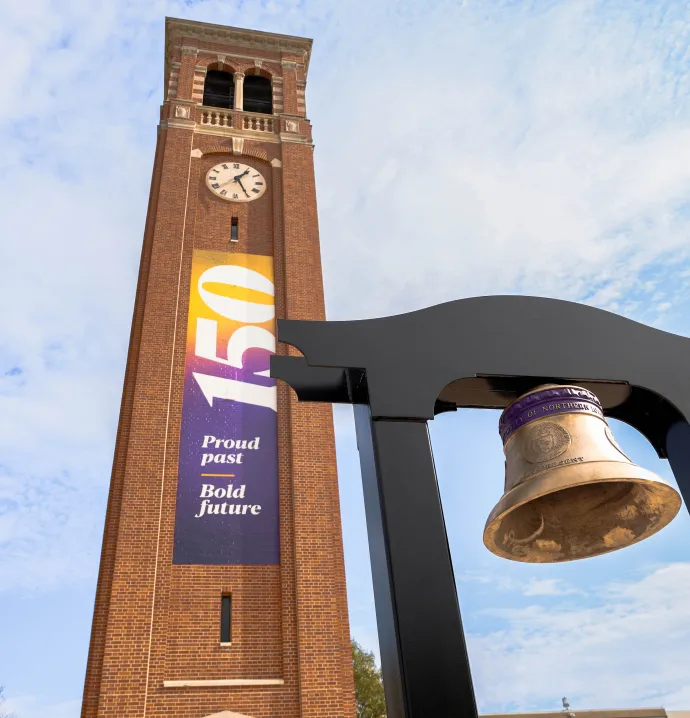UNI students bring campus architecture to life through sesquicentennial walking tours
UNI students bring campus architecture to life through sesquicentennial walking tours

As part of the University of Northern Iowa’s Sesquicentennial Celebration, UNI history students are stepping into the role of campus historians, guiding architectural walking tours that showcase 150 years of campus history and design.
Each stop offers participants not just architectural detail, but also insight into how the university has grown and changed across the decades. Whether the Gothic revival design of Seerley Hall or the stately elegance of the President’s House, the buildings provide a lens into UNI’s past and future.
The tours originated from UNI’s Introduction to Public History course, taught by Kevin Mason, professor of history. Students in the class spent weeks researching building histories and learning how to present them in engaging ways for the public. Mason said the project is an opportunity for students to take history outside the classroom.
“I think these tours are important because it allows students to get out and practice a practical skill,” Mason said. “It’s a way to take some of what we talk about in the classroom and bring it out into the world. Doing live interpretation, understanding the campus and also being able to help other organizations makes it more than just an academic exercise.”
For many students, the project became a way to see familiar places with new eyes.
“There’s a lot of architectural knowledge about the buildings shared, and it’s very interesting,” said UNI student Emma Holmes. “It’s also a good way to learn more about the campus.”

History student Ellie Borrenpohl said the tours reveal how architecture reflects UNI’s broader history.
“These tours are important because it’s important to know the history of these buildings,” Borrenpohl said. “They indicate overall trends in UNI’s history that help us predict how these buildings may be used in the future. This campus is 150 years old, and it’s important because you can definitely see the age of the architecture on all of these buildings. There are no two buildings on this campus that are quite the same.”
By highlighting both the beauty and historical significance of campus architecture, the tours give participants a deeper appreciation for UNI’s legacy. For students, the experience also builds confidence and public history skills they can carry into future careers.
“This is the kind of hands-on learning UNI does best,” Mason said. “It’s about connecting knowledge with the community, and that’s what makes these tours meaningful.”






